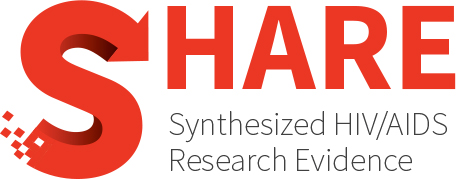Category Archives: Financial arrangements
How care is paid for
Cost of differentiated HIV antiretroviral therapy delivery strategies in sub-Saharan Africa: A systematic review
BACKGROUND: Efficient and scalable models for HIV treatment are needed to maximize health outcomes with available resources. By adapting services to client needs, differentiated antiretroviral therapy (DART) has the potential...
Economic compensation interventions to increase uptake of voluntary medical male circumcision for HIV prevention: A systematic review and meta-analysis
BACKGROUND: Economic compensation interventions may help support higher voluntary medical male circumcision (VMMC) coverage in priority sub-Saharan African countries. To inform World Health Organization guidelines, we conducted a systematic review...
Leveraging the lessons learned from financing HIV programs to advance the universal health coverage (UHC) agenda in the East African community
Background: Although there is broad consensus around the need to accelerate progress towards universal health coverage (UHC) in Sub-Saharan Africa, the financing strategies for achieving it are still unclear. We...
The impact, cost and cost-effectiveness of oral pre-exposure prophylaxis in sub-Saharan Africa: A scoping review of modelling contributions and way forward
INTRODUCTION: Oral pre-exposure prophylaxis (PrEP) is a new form of HIV prevention being considered for inclusion in national prevention portfolios. Many mathematical modelling studies have been undertaken that speak to...
Cost-effectiveness of HIV prevention interventions in sub-Saharan Africa: A systematic review
Background: Sub-Saharan Africa carries the highest HIV burden globally. It is important to understand how interventions cost-effectively fit within guidelines and implementation plans, especially in low- and middle-income settings. We reviewed...
Do quality improvement initiatives improve outcomes for patients in antiretroviral programs in low- and middle-income countries? A systematic review
Background: There have been a range of quality improvement (QI) and quality assurance initiatives in low- and middle-income countries to improve antiretroviral therapy (ART) treatment outcomes for people living with HIV....
How effective are approaches to migrant screening for infectious diseases in Europe? A systematic review
Rates of migration to Europe, and within Europe, have increased in recent years, with considerable implications for health systems. Migrants in Europe face a disproportionate burden of tuberculosis, HIV, and...
Scaling up HIV self-testing in sub-Saharan Africa: A review of technology, policy and evidence
PURPOSE OF REVIEW: HIV self-testing (HIVST) can provide complementary coverage to existing HIV testing services and improve knowledge of status among HIV-infected individuals. This review summarizes the current technology, policy...
Early impact of the patient protection and affordable care act on people living with HIV: A systematic review
The US Patient Protection and Affordable Care Act (ACA) was the most influential policy-related change to the care of people living with HIV in decades. We systematically searched and analyzed...
Cost effectiveness of HIV and sexual reproductive health interventions targeting sex workers: A systematic review
Background: Sex workers have high incidences of HIV and other sexually transmitted diseases. Although, interventions targeting sex workers have shown to be effective, evidence on which strategies are most cost-effective...
